The Rotonda of Thessaloniki is one of the city’s most prominent monuments, on high ground overlooking the rest of the historic center of the city. This is Thessaloniki’s oldest intact building, and an architectural marvel.
The Thessaloniki Rotunda
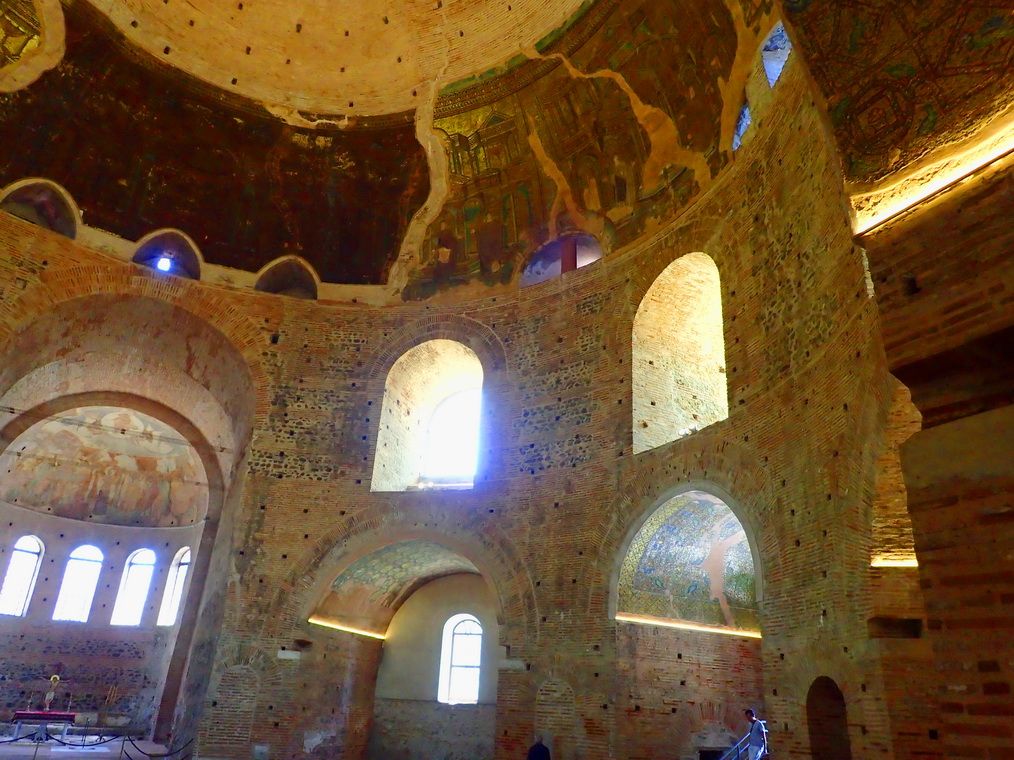
Massive and powerful, the Rotunda of Thessaloniki is nearly 30 meters high and 25 meters in diameter. That makes it roughly two-thirds the size of Rome’s Pantheon. The drama is enhanced by the broad pedestrian approach and the open space around the building.
The walls are over 6 meters thick, but huge windows in the deep niches give the space an ethereal quality. This is a tremendous, soaring, unbroken space, entirely empty but for the altar in the apse to the east. The acoustics are marvellous – go to the middle and whisper under the crest of the dome.
This is Thessaloniki’s oldest building, and a central and essential stop on your visit to the city. Even those with less interest in history love being in this dramatic space.
The Early History of the Rotunda of Thessaloniki
The Rotunda was built at a fascinating time in Thessaloniki. The city was on the cusp of Christianity. The Roman Tetrarch (one of the four co-Emperors of Rome) Galerius Maximus was a pagan and a persecutor of Christians, most notably of Thessaloniki’s patron saint, Agios Dimitrios. Galerius built the Rotonda originally either as a pagan temple or as his own mausoleum. It was built in 306 AD, shortly after the dedication of triumphal arch Kamara. The Rotonda is about 100 meters north of Kamara, and the two were connected by a processional road. Galerius died in 311, and was buried in present-day Serbia.
Less than three decades after Galerius built the Rotunda, Constantine the Great founded Constantinople. As the seat of power shifted to Constantinople, Christianity spread rapidly through the empire. It was during these early years of the Byzantine empire that the Rotunda became a Christian church. This is when the apse to the east – so clearly visible from the outside as well – was added, as well as glorious mosaics, as we’ll explore below.
The church was originally the church of the Archangels, according to Byzantine texts.
The Thessaloniki Rotunda in the Ottoman Era
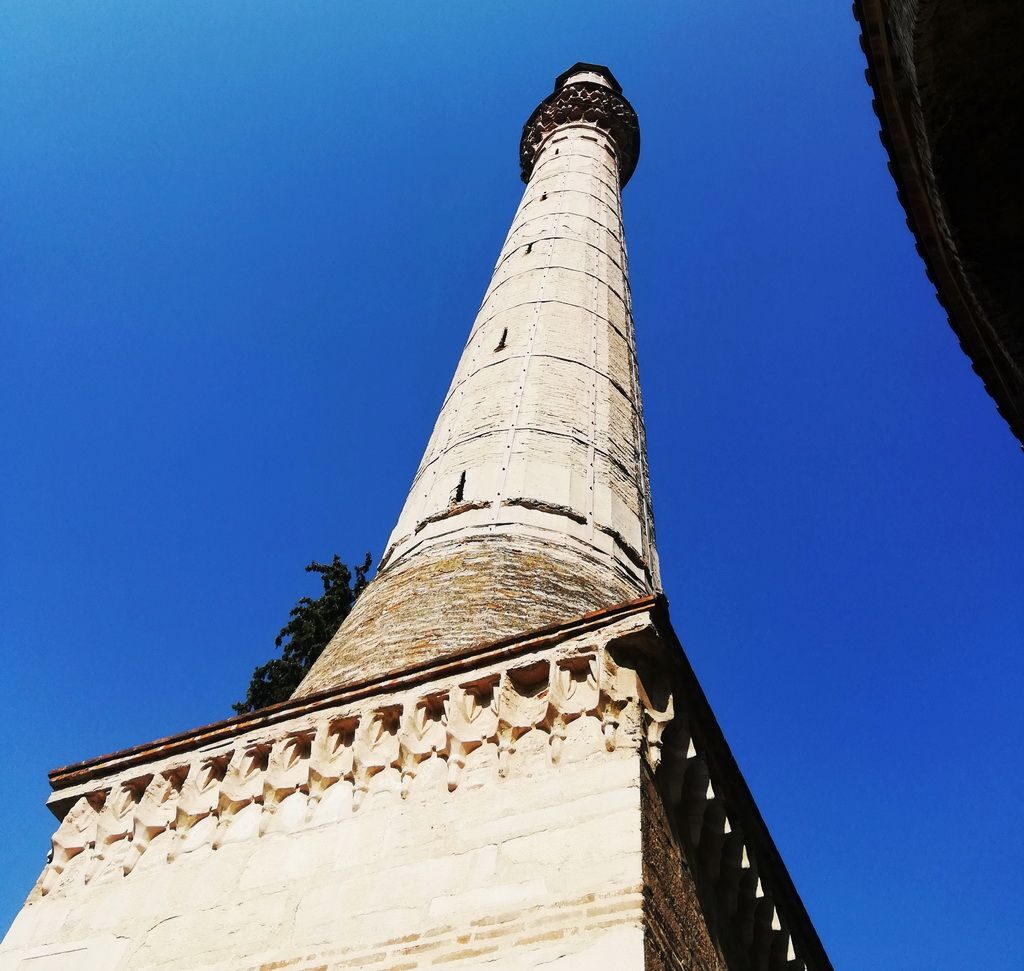
The Ottomans conquered the city in 1430. But they did not convert all churches into mosques at once. The Thessaloniki Rotunda remained a Christian church until 1591, when it became the mosque of Hortatz Effendi. Over the door, you’ll notice an inscription in Turkish in Arabic script commemorating the dedication. At this time, the Rotonda also acquired the fountain for ritual ablutions to prepare for worship. It also acquired the minaret for calls to prayer. It’s 42 meters high, and the last minaret still standing in Thessaloniki.
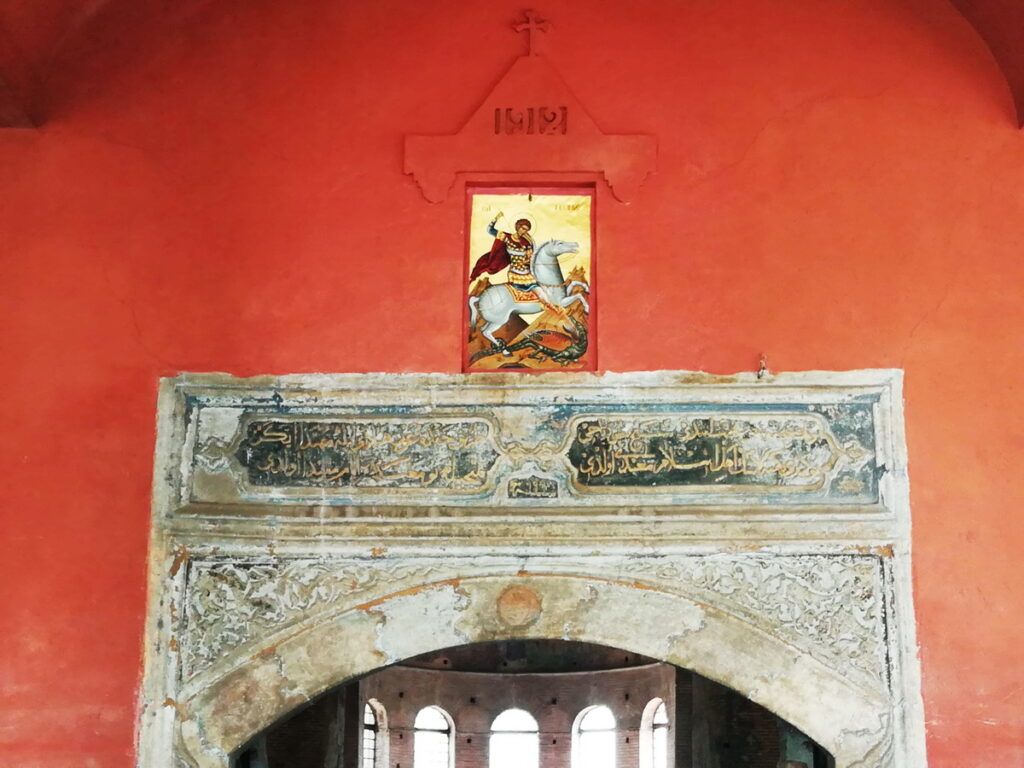
The tomb of Hortatz Effendi is around the back of the Rotonda. Forgotten and overgrown with weeds, it’s partially walled in. Through ornate openings, you’ll notice the traditional Ottoman grave marker, with rows of script of biographical details.
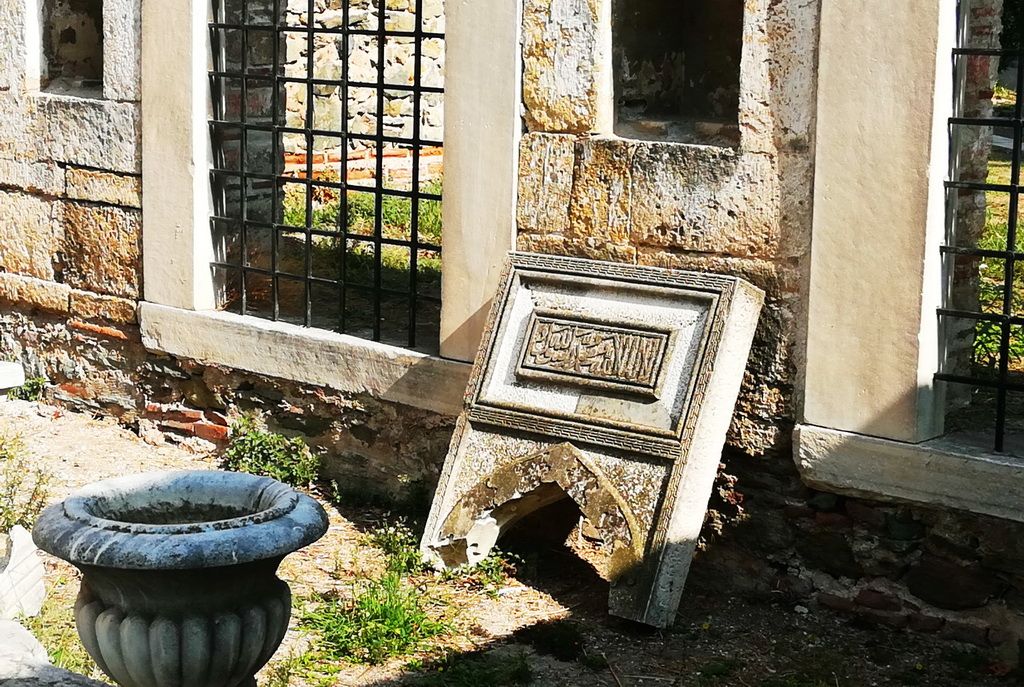
Arabic Turkish inscriptions beside the tomb of Hortaz Effendi 
A Fountain for Ritual Bathing before Prayer, added when the Thessaloniki Rotunda became a Mosque 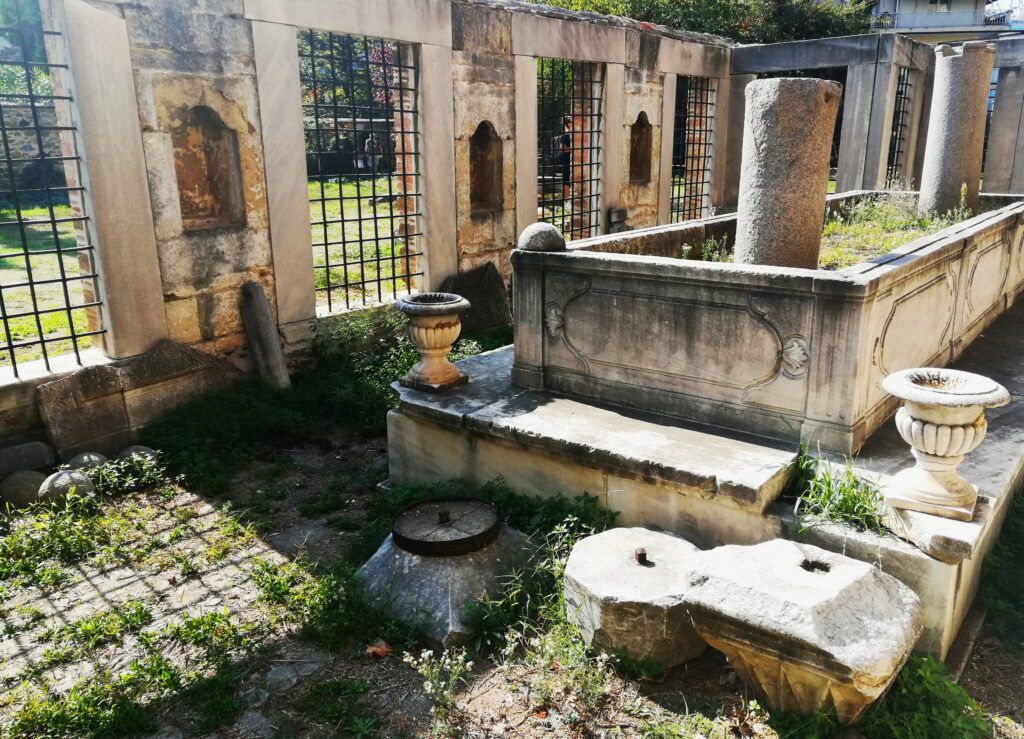
The Tomb of Hortaz Effendi, benefactor of the mosque
The Thessaloniki Rotunda in Modern Greece
Thessaloniki was liberated from the Ottomans and joined the modern Greek State in 1912. The Rotonda became a Christian church once again, this time consecrated as Agios Giorgos – the church of St. George. There is a very small chapel of St. George just north of the entrance to the Rotonda. Although some religious ceremonies are still celebrated here, the Rotonda is now under the auspices of the Ministry of Culture, and functions as a monument.
The Mosaics of the Rotunda of Thessaloniki
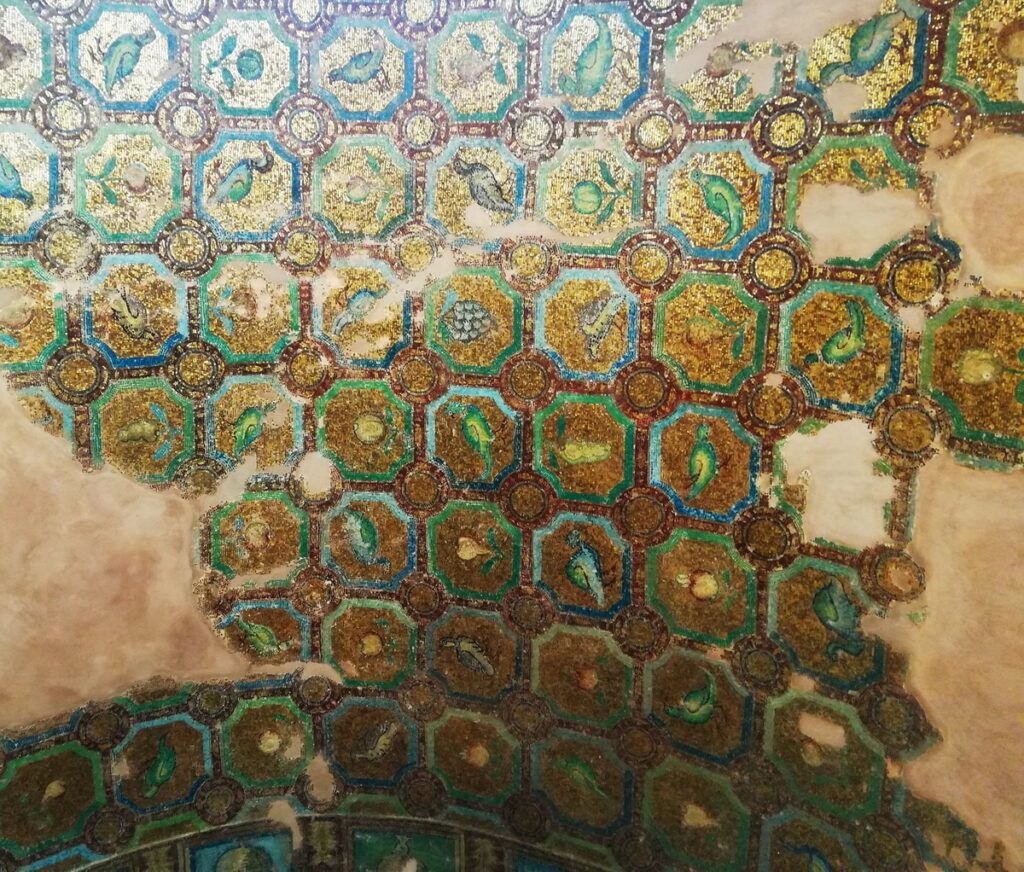
Luscious Pears and Glittering Peacocks 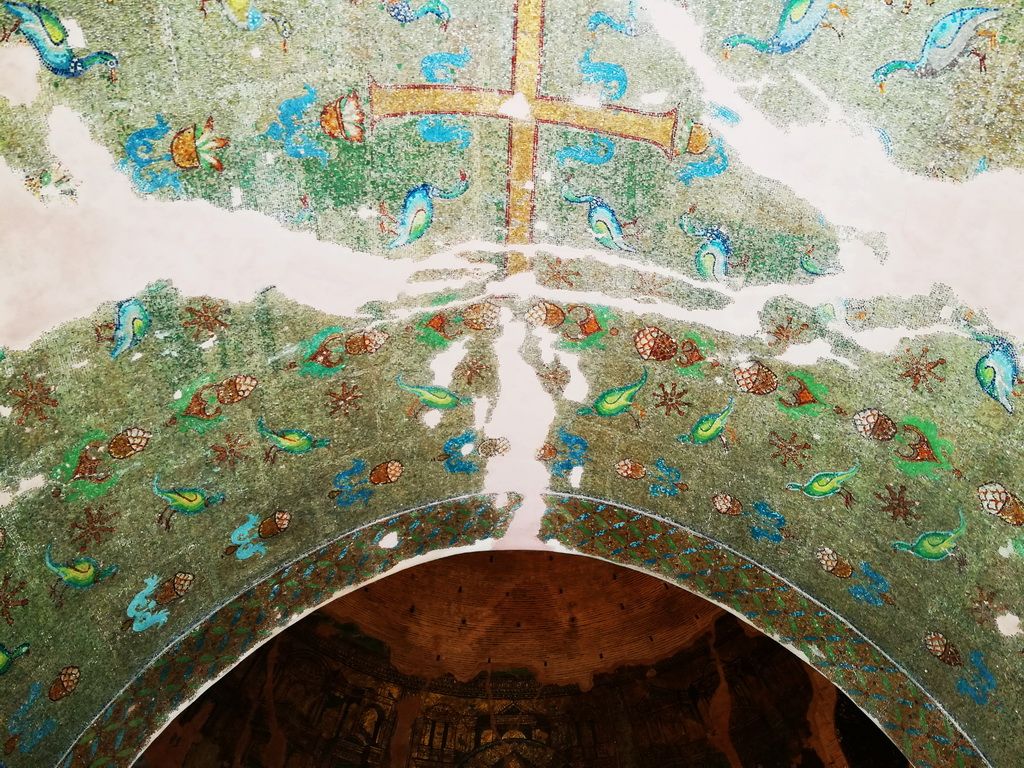
Delicate Mosaics: A Cross in a Sparkling Sea of Fruits and Birds
It’s a perfect time to visit the Rotunda now, because a long and painstaking restoration of the glorious mosaics is finally complete. This means that the dramatic interior is free of scaffolding, and the glorious mosaics are aglow.
The mosaics of the Thessaloniki Rotunda were added when it became a Christian church. They date from two distinct periods between the 4th century through the 6th. Because of their original iconography, unique style, and artistic skill, the mosaics of the Rotonda of Thessaloniki rank among the masterpieces of early Christian art. In the arches of the niches, you’ll see Botanical motifs, juicy pears, and marvelous renderings of birds.
The Mosaics of the Dome of the Rotonda
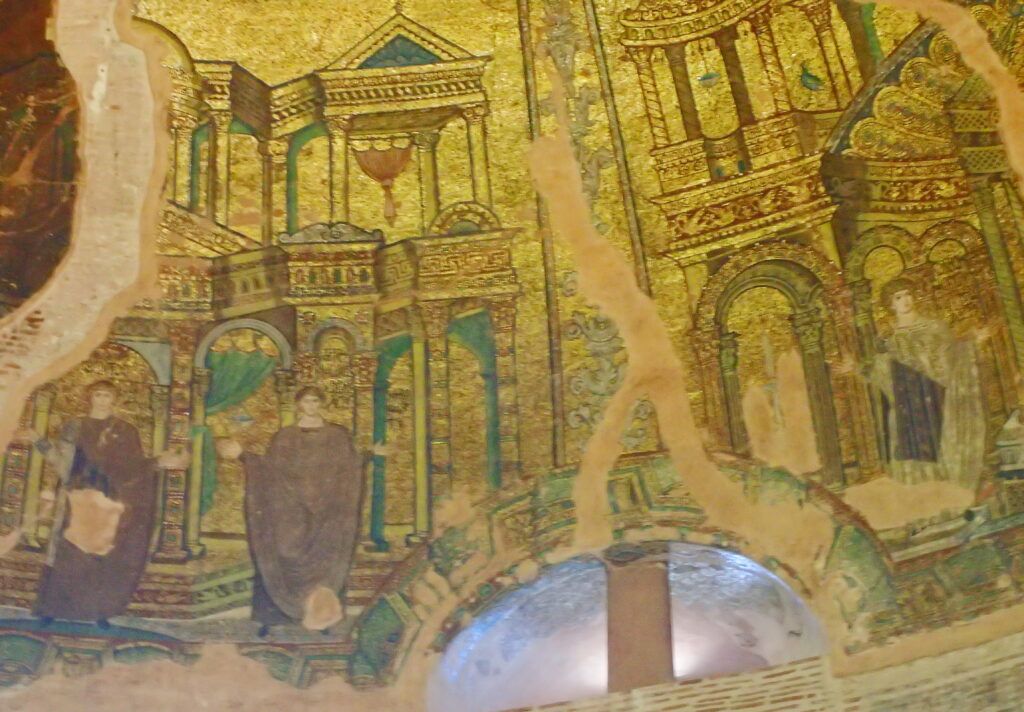
The most fully preserved section is in the lowest and largest of the three bands beneath the crest of the dome. Here, you’ll see a complex architectural background of shimmering gold. Against the background are secular and religious figures, their hands lifted in prayer. Next to each is a name, their function, and a month – for example, Damianou, doctor, September.
Little of the middle band remains. Here we see just the lowest portion of the mosaic, where we can make out the sandaled feet of 30 men, thought to be in a triumphant dance.
Above this are four archangels, holding aloft the heavenly skies. Above them is a wreath of fruits, and directly above that, a ring of 8-pointed stars. The crest of the dome is nearly all naked masonry now. But you can barely make out the charcoal tracing of the figure of Christ. Just a portion of the original mosaic survives – the fingers of a hand, and part of a halo.
Visiting the Thessaloniki Rotunda
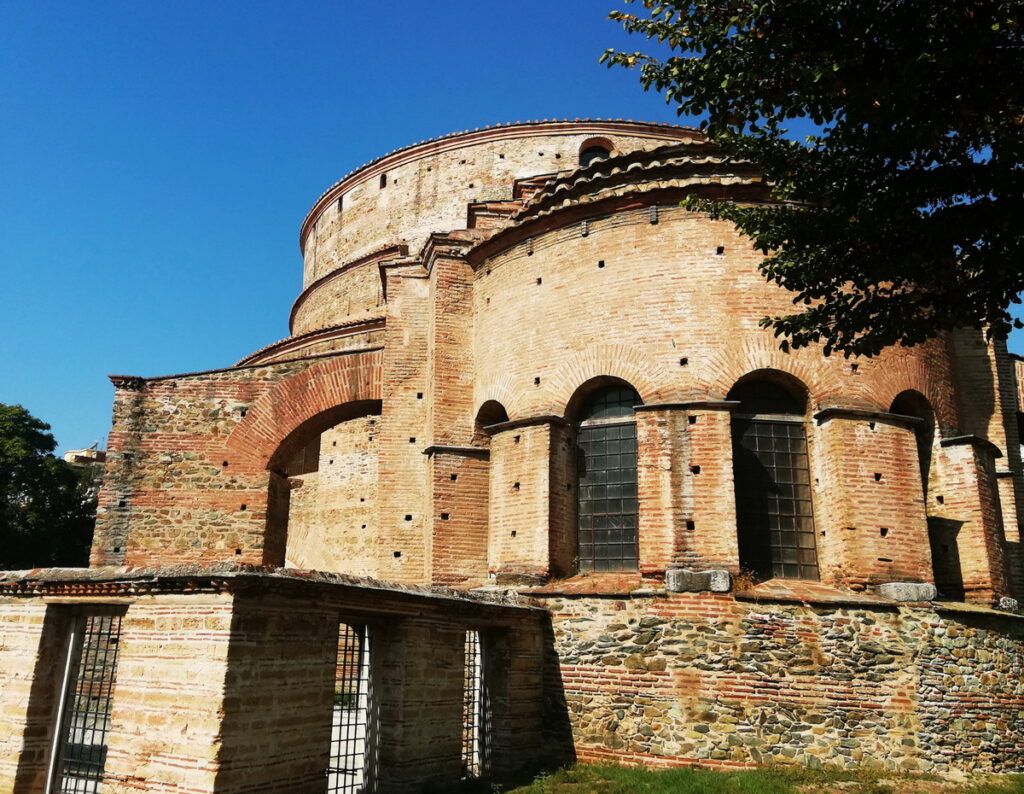
The Rotonda is in the middle of Agios Giorgos square, just north of Kamara. Dimitrios Gounari leads to Agios Giorgos square from the south, and Filippou leads to the square from the west.
Admission and Hours of the Rotunda:
Admission is €6/€3 reduced. The Rotunda is open daily except for Tuesdays, from 8:30 – 15:30, summer and winter.
It is also included in the combined ticket:
April 15th – October 31st – Combined Ticket for €15.00 for a three-day period
- Archaeological Museum of Thessaloniki
daily: 8.00-20.00 - Museum of Byzantine Culture
daily: 8.00-20.00 - White Tower
daily: 8.00-20.00 - Roman Forum of Thessaloniki
Monday-Sunday: 8.30-16.00
Tuesday closed - Museum of the Roman Forum of Thessaloniki
Monday-Sunday: 8.30-16.00
Tuesday closed - Galerian Complex
Monday-Sunday: 8.30-16.00
Tuesday closed - Arched Hall
Monday-Sunday: 8.30-16.00
Tuesday closed
November 1st – April 14th:
- Archaeological Museum of Thessaloniki
daily: 8.30-16.00 - Museum of Byzantine Culture
daily: 8.30-16.00 - White Tower
daily: 8.30-16.00 - Roman Forum of Thessaloniki
Monday-Sunday: 8.30-16.00
Tuesday closed - Museum of the Roman Forum of Thessaloniki
Monday-Sunday: 8.30-16.00
Tuesday closed - Galerian Complex
Monday-Sunday: 8.30-16.00
Tuesday closed - Arched Hall
Monday-Sunday: 8.30-16.00
Tuesday closed

